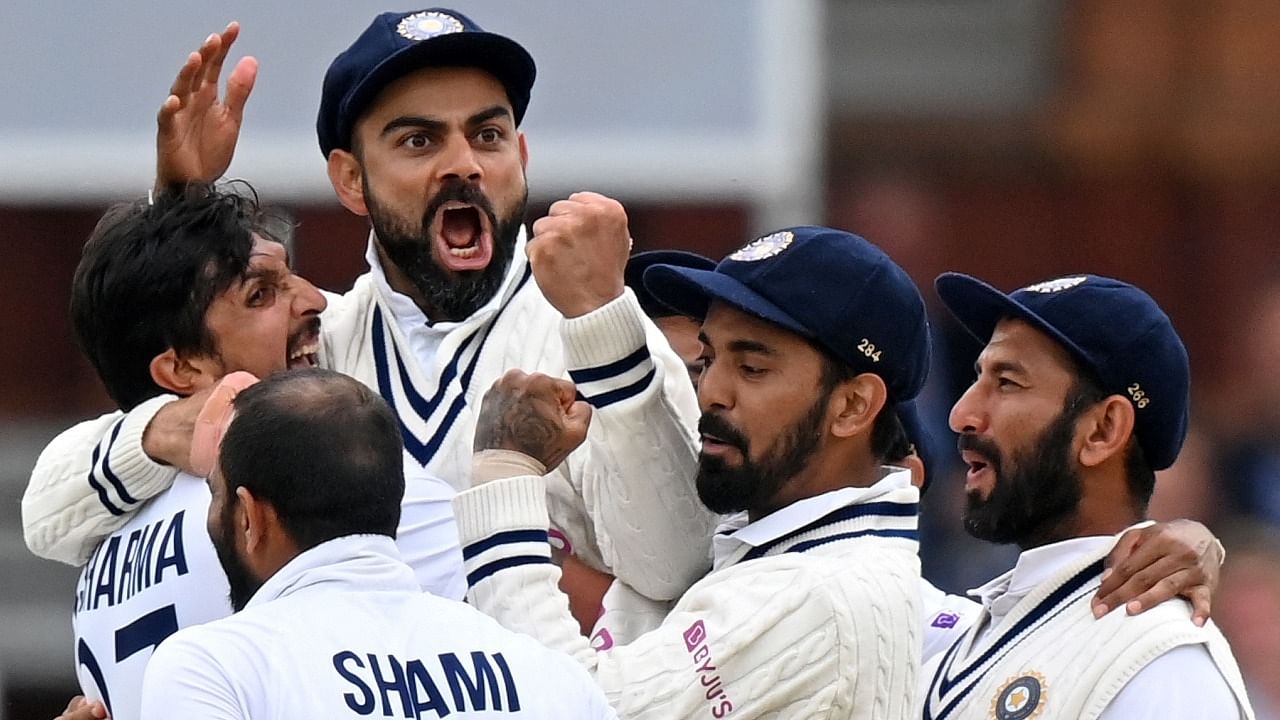
John McEnroe, the explosive American tennis legend, was a master at manipulating the mind. His mind that is.
A gifted stroke-maker with wonderful touch, McEnroe was at his glorious best when frothing and spewing venom. It was as if he needed to feel that the whole world was against him for him to raise his game a few notches. Towards that end, he saw an insult where none existed, a perceived slight intended only in his imagination.
Aggression or anger can be a double-edged sword. One can either get carried away by the swirl of emotions or direct it constructively. McEnroe channelled his angst brilliantly; he knew what worked for him; he was smart enough not to tip over and be consumed by the rage deliberately building inside him.
If there is ever a quest for a team equivalent to McEnroe, it will end with the current Indian cricket side. Over the last half-dozen years or so, under the outwardly tempestuous Virat Kohli, India have subconsciously adopted the McEnroe template. Clearly, it hasn't been to their detriment.
Not without reason is it said that, especially in cricket, where the captain isn't a nominal title whose responsibilities aren't restricted to turning up for the toss alone, the team takes its lead from its skipper. Never was this more evident than in Australia earlier in the year. With Ajinkya Rahane stepping in for Kohli for the last three Tests, India didn't snarl and growl. Their aggression manifested itself entirely through their cricketing disciplines, whether in the form of a stonewalling Cheteshwar Pujara, a dominant Rishabh Pant, a hamstrung but determined Hanuma Vihari, or the remarkably mature debutant duo of Washington Sundar and T Natarajan.
Also read: Ajinkya Rahane unfazed by criticism
Histrionics and theatrics don't come naturally to Rahane. Kohli, by contrast, is in the McEnroe mould, almost looking for a fight to get himself going but wise enough to cast emotion aside the moment he settles into his stance.
His is a lead that has rubbed on the likes of KL Rahul and Mohammed Siraj, neither unafraid to engage the opposition in verbal warfare but both as much in control of their angst as they need to be to perform optimally. It doesn't always make for pretty viewing, but if professional sportspersons are to be castigated for being too passionate so long as they conform to norms of acceptable behaviour (whose definition is, at best, subjective), it surely is a bit of a stretch.
There is no place in sport for abuse and personal attacks. That goes without saying. But what is sports without a little drama, a little pow-wow, those tiny battles within the larger contours of the larger war?
Lord's was the perfect illustration of how, when anger isn't directed through the correct funnels, it can backfire spectacularly. As also of how, when one's thinking isn't clouded by blind rage or the desperate need to prove a point, it can be the perfect fuel to launch a blistering attack.
England took collective umbrage at Jasprit Bumrah's left-field bouncer barrage at talisman James Anderson late on the third evening. Bumrah has no history of intimidatory bowling in his five and a half years at the international level, so the impact was magnified further. Every screaming short ball that tickled Anderson's helmet, gloves or ribs drove England closer to the edge of the precipice. They were so intent on repaying Bumrah in the same coin on the fifth morning that, their thinking addled, they targeted head and limb more than the three stumps the batsman was guarding.
Bumrah calmly rode that storm out, taking the wind out of England's sails. Was it any surprise that England came apart in their second innings after his unbeaten 89-run ninth-wicket stand with Mohammed Shami? Joe Root's men were hoisted with their own petard.
India took the more prudent route. They knew they had their opponents on the hop; they realised when they came out with 60 overs at their disposal that they couldn't afford their anger to take the edge off their cricket. Siraj didn't shy away from having a go at batsmen, but when he turned at the top of his bowling mark, he was all business, plotting modes of dismissal rather than means of inflicting physical damage. That pretty much summed up the difference in mindsets.
India have learnt how to use aggression to their advantage. They have an acute sense of who to use it against and when to do so. Australia and England are their favoured targets. Given their recent results against these two sides, who's to say they haven't got the balance spot-on? Whether one likes it or not, India aren't just a top cricketing side; they have also taken ownership of and finetuned the art of mental disintegration.
(R Kaushik is a Bengaluru-based senior cricket writer)
Disclaimer: The views expressed above are the author’s own. They do not necessarily reflect the views of DH.